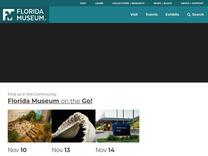The First Documented Shark Attack in the Americas – Caribbean Archaeology Program https://www.floridamuseum.ufl.edu/caribarch/education/sharks/
The first documented shark attach in the Americas, cal AD 789-1033. There are no eyewitness accounts, only the testimony of the bones. Yet our knowledge of prehistoric lifeways and forensic anthropology allow us to reconstruct what probably happened. The incident went something like this: „Th
Photo © Linda Budinoff The characteristics of the multiple cut marks led me to

